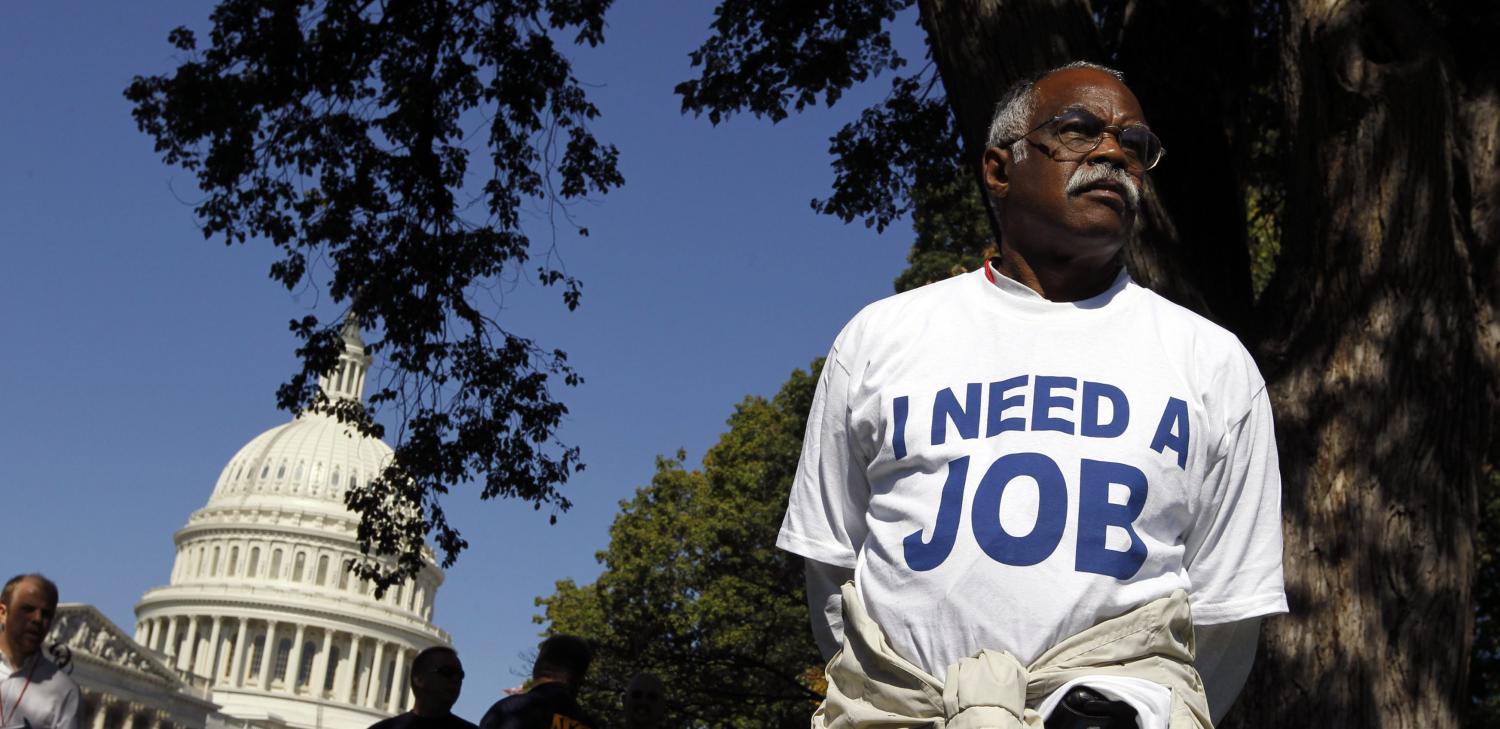On Tuesday, September 5th, the Brookings Institution’s Center on Children and Families and the Race, Prosperity, and Inclusion initiative will host J.D. Vance, author of Hillbilly Elegy, and William Julius William, author of The Truly Disadvantaged, to further explore the race and class divide in America. To register for this event, please click here.
The legacy of American racism is dominating the headlines again. One of the arguments used against the removal or relocation of Confederate symbols is that “it is simply part of our history”. This is not the case. The results of the enslavement, disenfranchisement and exclusion of black Americans remain visible and vivid in 21st century America.
Take the economic gap between black and white Americans, which is stark and stubborn. Black median household income was $36,898 in 2015, compared to $62,950 for whites. The gap has actually widened slightly since 2002 (from $23,500 to $26,000).
The black-white income gap obviously has many causes. But one that has received too little attention is the persistent race gap in rates of relative intergenerational mobility. This mobility gap means that much of the progress towards closing the race gap made by one generation is lost in the next, and the result is a century-long delay in economic improvements for black Americans.
BLACK MOBILITY LAGS WHITE MOBILITY, EVEN TODAY
We have written previously on the lower rates of upward mobility and the higher rates of downward mobility for black Americans; but like most researchers, our focus has been on data from the last few decades.
William Collins and Marianne Wanamaker have been more ambitious, reaching back to the 19th century. With a dataset comprised of Census microfilm, WWII draft records, and Ancestry.com records, they are able to study linked pairs of fathers and their sons all the way back to 1880, and up to the end of the 20th century.
Their findings, published in an NBER working paper, Up from slavery? African American intergenerational economic mobility since 1880, are striking. Imputing income using individual characteristics, including occupation, region, and gender, Collins and Wanamaker find that black sons have historically been significantly less likely than their white peers from similar economic backgrounds to ascend the income ladder. Black sons were less likely than their white peers to enjoy higher-earning jobs than the ones their fathers had, so their incomes were lower. This mobility gap can be seen across the entire period. Even for the latest cohort (with earnings observed in 1990), they find a yawning gap in upward economic mobility between black and white sons from similar backgrounds—somewhat smaller than existed in 1900 or 1930, but still huge.
The chart below shows the proportion of sons rising at least 10 percentiles on the income distribution, compared to the position of their fathers, for each decile of father’s income (or mother, if she was the sole guardian). So in 1930, for example, white sons born in the 2nd decile had a 57 percent chance of being relatively upwardly mobile by 10 or more percentiles, while black sons had only about a 20 percent chance. By 1990, those numbers were about 80 percent and 45 percent.
TIME ALONE WON’T HEAL THE RACE DIVIDE
There is a widespread view that black poverty today is an echo of black oppression in the past, but that with the coming of legal equality, the gap will soon close. The Collins and Wanamaker findings suggest otherwise. The road towards economic equality is proving much longer, because of the persistent mobility gap.
The authors illustrate this point by simulating a “counterfactual history”: what the race gap in earnings would’ve looked like in each cohort, if black sons had similar rates of upward mobility to white sons. Had black sons been able to be as upwardly mobile as white sons, their respective earnings distributions in every cohort would have been much closer to that for whites:

Under this counterfactual scenario, nearly half of African American men would have reached the 30th percentile of the earnings distribution by 1900. But that didn’t happen in actual U.S. history until 2000. In other words, the findings suggest, the lower rates of upward mobility have delayed the economic ascent of black men by a century.
RACE, RACISM AND RELATIVE MOBILITY
What’s going on here? Why aren’t black sons as able as white sons from seemingly-similar economic backgrounds to become relatively upwardly mobile? There are no clear answers in the data: the basic results hold even when the authors add controls for a host of covariates, including parental education, exact age, state of residence, family structure, literacy and urban/rural status. Wealth may play a role. Collins and Wanamaker have some information on homeownership, and on whether farmers owned their land or not, but unobserved wealth disparities—especially if transmuted into the son’s educational opportunities—could explain part of the differing upward mobility rates.
Racism could well be a big part of the answer. There has been, and remains, systemic racial discrimination in the justice system, housing market, and workplace. A modern example: black Americans who smoke marijuana are almost four times as likely to be arrested for possession, even though black and white Americans report using the drug at similar rates. Experimental studies find that black job applicants are half as likely to receive a call back than their white counterparts—on par with white applicants given criminal convictions. It’s hard to be upwardly mobile when your resume is twice as likely to be thrown in the trash, compared to otherwise identical white applicants.
The authors themselves focus on disparities in human capital accumulation—in particular, how proficient children seem to be with language, numbers, and logical reasoning by the time they reach young adulthood. Work by Bhash Mazumder and others suggest that much of the mobility gap disappears if you account for people’s “human capital” (specifically, their performance on standardized tests in young adulthood). Collins and Wanamaker attempt a similar analysis, and find similar result for recent cohorts. They then look at the earlier, 1910-1930 cohorts, imputing WWII enlistee test scores (from the Army General Classification Test) to their sample sons, using their race, region, and occupation. The results are similar: accounting for “human capital” in young adulthood reduces (though does not eliminate) the race gap in upward mobility.
Gaps in the opportunities to accumulate human capital remain today. Many states and local governments spend less on their poorest, disproportionately black and brown school districts than on their wealthiest districts. In many of these schools, students have fewer extracurricular opportunities and experience significantly higher teacher turnover relative to wealthier schools. Black Americans are at risk of continuing to lag behind whites, in terms of economic resources, until and unless we can narrow the gaps in intergenerational mobility; and that means, above all, investments in education and skills.







